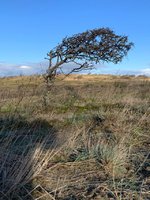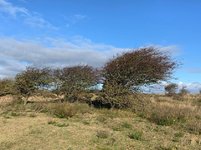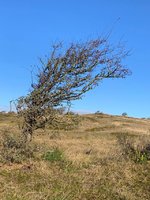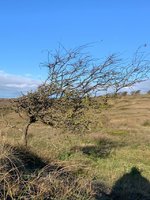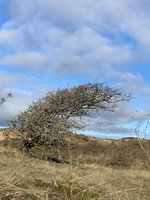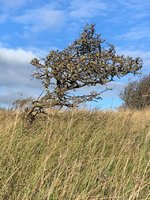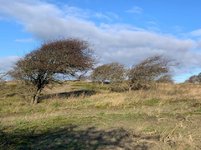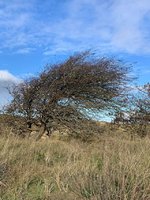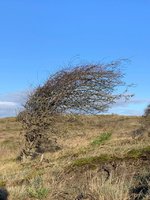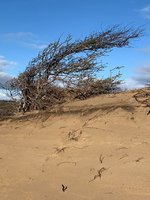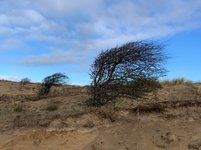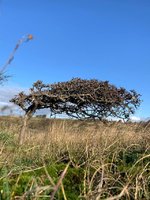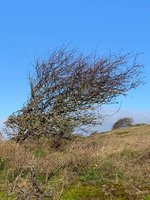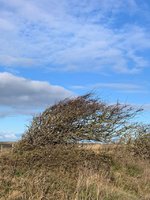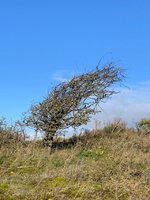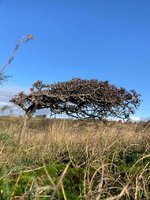You are using an out of date browser. It may not display this or other websites correctly.
You should upgrade or use an alternative browser.
You should upgrade or use an alternative browser.
Dutch Fukinagashi for inspiration
- Thread starter Marco B
- Start date
Michael P
Omono
Thanks for posting these! The photos are very helpful to those of us who live in places where such trees do not grow in nature. In addition to the shape, I am impressed by the extreme ramification. Do you know what species they are?
Bnana
Chumono
I guess that these are all in the dunes, that's where you get this shape.
These trees are not shaped by wind alone. There is also regular salts pray that his the tree from the same side. So the windward side is damaged by the salt, that's is bad for the bus and leaves. The leeward side does not receive as much salt spray and grows better. So you see this mostly in salt sensitive species.
But nice examples of this very particular shape
These trees are not shaped by wind alone. There is also regular salts pray that his the tree from the same side. So the windward side is damaged by the salt, that's is bad for the bus and leaves. The leeward side does not receive as much salt spray and grows better. So you see this mostly in salt sensitive species.
But nice examples of this very particular shape
Potawatomi13
Imperial Masterpiece
Does NOT look like a pleasant place to live .
.
This is about Fukinagashi style, not about good places to live... What is the reason you write that down?Does NOT look like a pleasant place to live.
Potawatomi13
Imperial Masterpiece
Hate wind any higher than breezeThis is about Fukinagashi style, not about good places to live... What is the reason you write that down?
Eckhoffw
Masterpiece
Yeah, just try and have a nice picnic there. Good luckHate wind any higher than breeze. First reaction.
There aren't very often strong winds here..... So you can picknick here easily in summer!Hate wind any higher than breeze. First reaction.
Frozentreehugger
Masterpiece
Some great pics . I love this style . So inspiring to witness the trees struggle against the elements . For me in the cold north . The effect of the cold drying winds especially in winter with ice and snow . Is a major dwarfing effect on trees . But I think a major component is missed in a lot of bonsai in this style . When the wind blows in nature it’s easy to visualize. The single direction . Of growth on the downwind side of the plant . But the ground has a known well documented in science effect on wind . The closer you are to the ground the slower the wind blows . The ground has a resistance that slows the wind . Not to mention . Objects like rocks and tree trunks . Creat vortexes changing wind strength and direction . The effect on trees can easily witnessed . When the wind blows even little the leaves and even small twigs don’t only bend downwind . They raise up away from the ground . Notice in the pics above the end of the branches rise from the ground . Like I said east to see just watch trees in the wind . The tree moved in direction of wind and up away from the ground . The best windswept bonsai reflect this . And bonsai people will even pick them as superior in quality . Compared to downward bent branches without even noticing why . We get over developed in bending branches down to create the illusion of age and snow . But wind does not push branches toward the ground .
Similar threads
- Replies
- 2
- Views
- 2K
- Replies
- 2
- Views
- 1K

